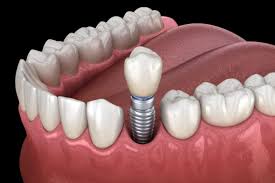Implant dentistry has revolutionized the field of restorative dental care, offering a long-lasting solution for missing teeth that closely mimics the appearance and function of natural teeth. With advancements in technology and techniques, dental implants have become a popular choice for patients seeking to regain their confidence and improve their overall oral health. This article explores the fundamentals of implant dentistry, the various types of implants available, and the procedures involved in their placement.
As more people are becoming aware of the benefits of dental implants, it is essential to understand the process, potential risks, and aftercare involved. Implant dentistry is not just about aesthetics; it plays a critical role in supporting jawbone health and maintaining facial structure. Whether you’re considering implants for the first time or seeking more information on the subject, this article aims to provide valuable insights into what makes implant dentistry a pioneering option in modern dentistry.
Types of Dental Implants
There are several types of dental implants to consider, each designed to meet specific patient needs. The most common types are endosteal and subperiosteal implants. Endosteal implants are surgically placed directly into the jawbone and are typically shaped like small screws. They are made of biocompatible materials that allow for fusion with the bone, providing a stable foundation for replacement teeth. On the other hand, subperiosteal implants are placed under the gum but above the jawbone, suitable for patients who may not have sufficient bone height or prefer not to undergo bone augmentation procedures. As you research your options, you can find Top-Rated Implant San Antonio, TX that will guide you through choosing the right type for your specific situation.
The Placement Procedure
The dental implant placement procedure typically involves several stages, starting with a comprehensive evaluation by your dentist. This assessment includes X-rays and 3D imaging to determine the best approach for your implant. The initial phase often includes extracting any damaged teeth or preparing the jawbone if necessary. Following this, the dental implant is surgically inserted into the jawbone, requiring meticulous planning to ensure proper alignment. After a healing period—usually several months during which the bone integrates with the implant—a crown or bridge is attached to restore function and aesthetics. Post-operative care is vital for the success of the implants, which may involve following specific guidelines from your dentist to ensure proper healing and longevity of the implant.
In conclusion, implant dentistry stands as a testament to the innovative advancements in dental care, offering a robust solution for those dealing with tooth loss. Patients can experience not only aesthetic restoration but also significant improvements in function and oral health, as implants help maintain jawbone integrity and facial structure. While the process requires careful planning, commitment, and adherence to aftercare instructions, the long-term benefits of dental implants often outweigh the initial considerations. As you explore the possibilities, it is essential to consult with a qualified dental professional who can provide personalized guidance and support, ensuring that your journey toward a renewed smile and improved quality of life is both successful and rewarding.

